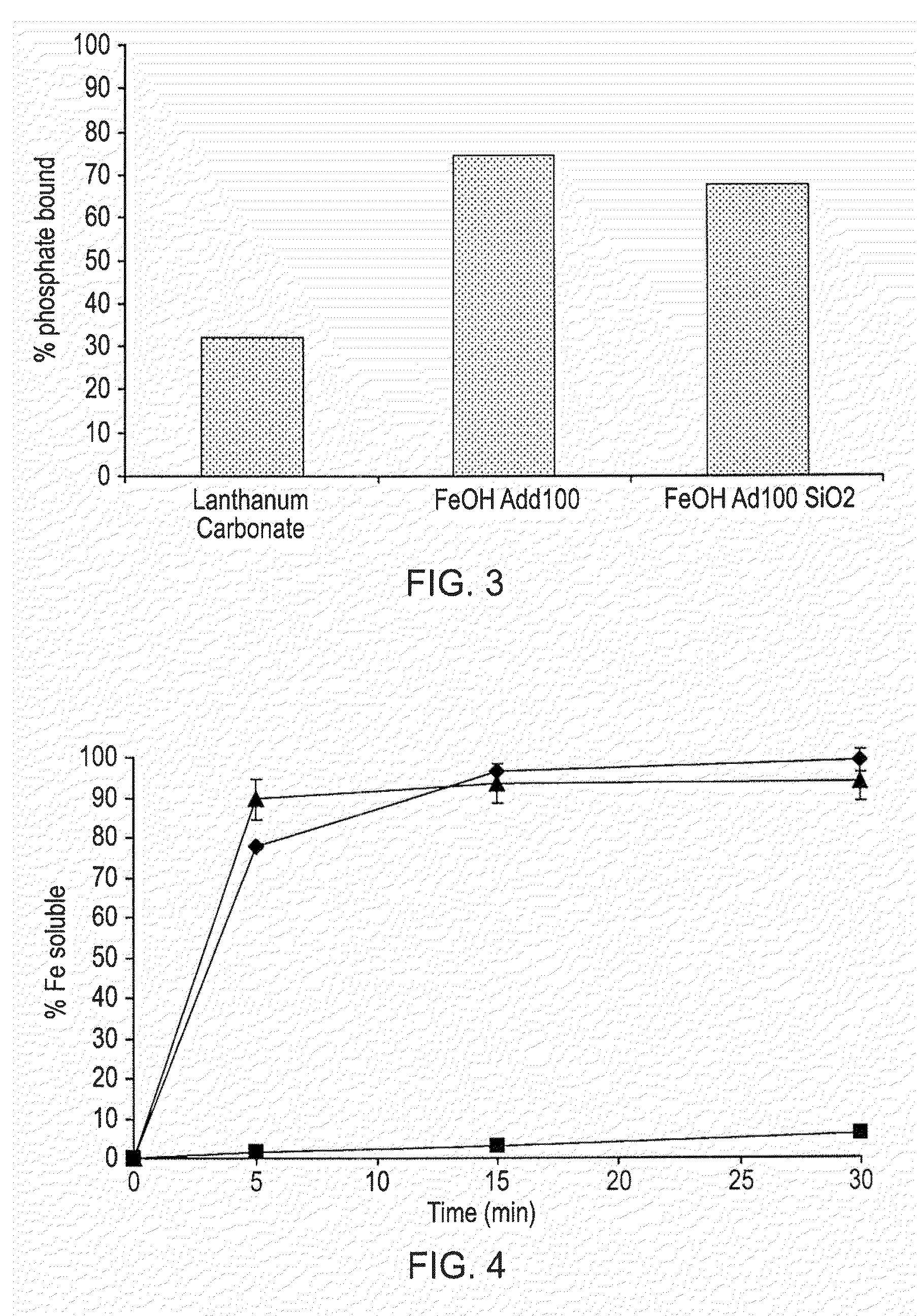Phosphate binding materials and their uses
a technology materials, applied in the field of phosphate binding materials, can solve the problems of secondary hyperthyroidism and soft tissue calcification, atherosclerosis of coronary arteries, and increase in serum phosphate concentrations, and achieve the effect of reducing complications
- Summary
- Abstract
- Description
- Claims
- Application Information
AI Technical Summary
Benefits of technology
Problems solved by technology
Method used
Image
Examples
Embodiment Construction
[0037]The production and characterisation of solid ligand-modified poly oxo-hydroxy metal ion materials is disclosed in our earlier application PCT / GB2008 / 000408 (WO 2008 / 096130) filed on 6 Feb. 2008. These materials, including those that comprise ferric iron (Fe3+), that are used to form the phosphate binding materials disclosed herein, may be represented by the formula (MxLy(OH)n), where M represents one or more metal ions. Normally, the metal ion will originally be present in the form of a salt that in the preparation of the materials may be dissolved and then induced to form poly oxo-hydroxy co-complexes with ligand (L). In some embodiments, the metal ions substantially comprise ferric iron (Fe3+), as opposed to a combination of metal ions being present, or the metal ions including iron in other oxidation states, such as Fe2+. Preferably, some of the ligand used is integrated into the solid phase through formal M-L bonding, i.e. not all of the ligand (L) i...
PUM
| Property | Measurement | Unit |
|---|---|---|
| Temperature | aaaaa | aaaaa |
| Fraction | aaaaa | aaaaa |
| Mass | aaaaa | aaaaa |
Abstract
Description
Claims
Application Information
 Login to View More
Login to View More - R&D
- Intellectual Property
- Life Sciences
- Materials
- Tech Scout
- Unparalleled Data Quality
- Higher Quality Content
- 60% Fewer Hallucinations
Browse by: Latest US Patents, China's latest patents, Technical Efficacy Thesaurus, Application Domain, Technology Topic, Popular Technical Reports.
© 2025 PatSnap. All rights reserved.Legal|Privacy policy|Modern Slavery Act Transparency Statement|Sitemap|About US| Contact US: help@patsnap.com



